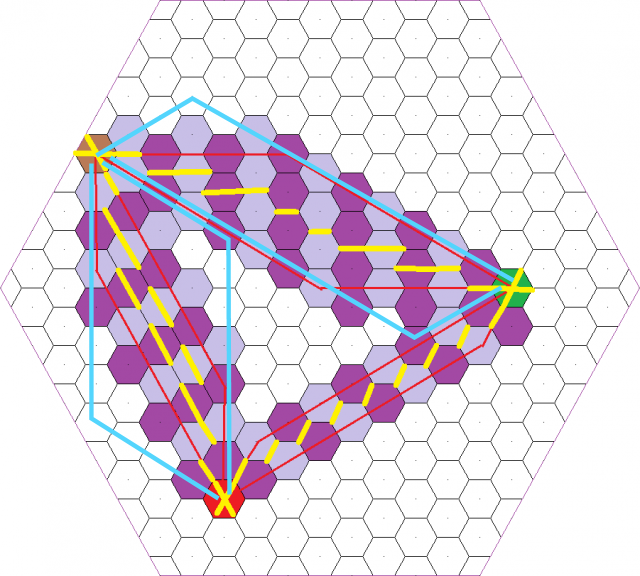Not sure if people understand the original topic.
So I make a new topic. FRESH...!!!
***
Regarding a wargame on a hexagon board.
The path of attack, or vision if you will.
Has been determined by making a parallellogram that follows the hexagon grid. The sharpest points of this parallellogram are the attacker and defencer.
Then the defending player determines the path that the projectiles from the attacker are allowed to make.
This path will be inside the parallellogram.
This path will go as much as possible towards the defender, so only 2 possible directions. And a zigzag is possible too.
Turns out, in some occasions. The terrain influence is almost twice as big than with the rope version.
Especially when the range is higher.
So, could there be a way where the defender does not determine the path? And the path is thus predictable by the attacker as well?
One of my fellow players suggested using a die to determine where the projectiles would go. Left or right. But this doesn't work well either. Since paths would tend to prefer a corner in the long run.











Zigzag
The attacker determines the long side and the short side of the parralelogram.
From the attack position, the long side will hop first and have 2 hops.
Then the other direction is taken.
This until the parralelogram is symetrical.
Now the attacker can choose a direction, but has to do the other direction right after.
This still creates a lot of down time.
Average
Both attacker and defender choose their own path in the parralelogram.
The average effect is taken, and rounded upwards.
Depending on if there is return fire. The players can choose a bad or good path.
The attacker has to declare first!
We are the most saticfactory with this approach for now.
Do you have an idea?